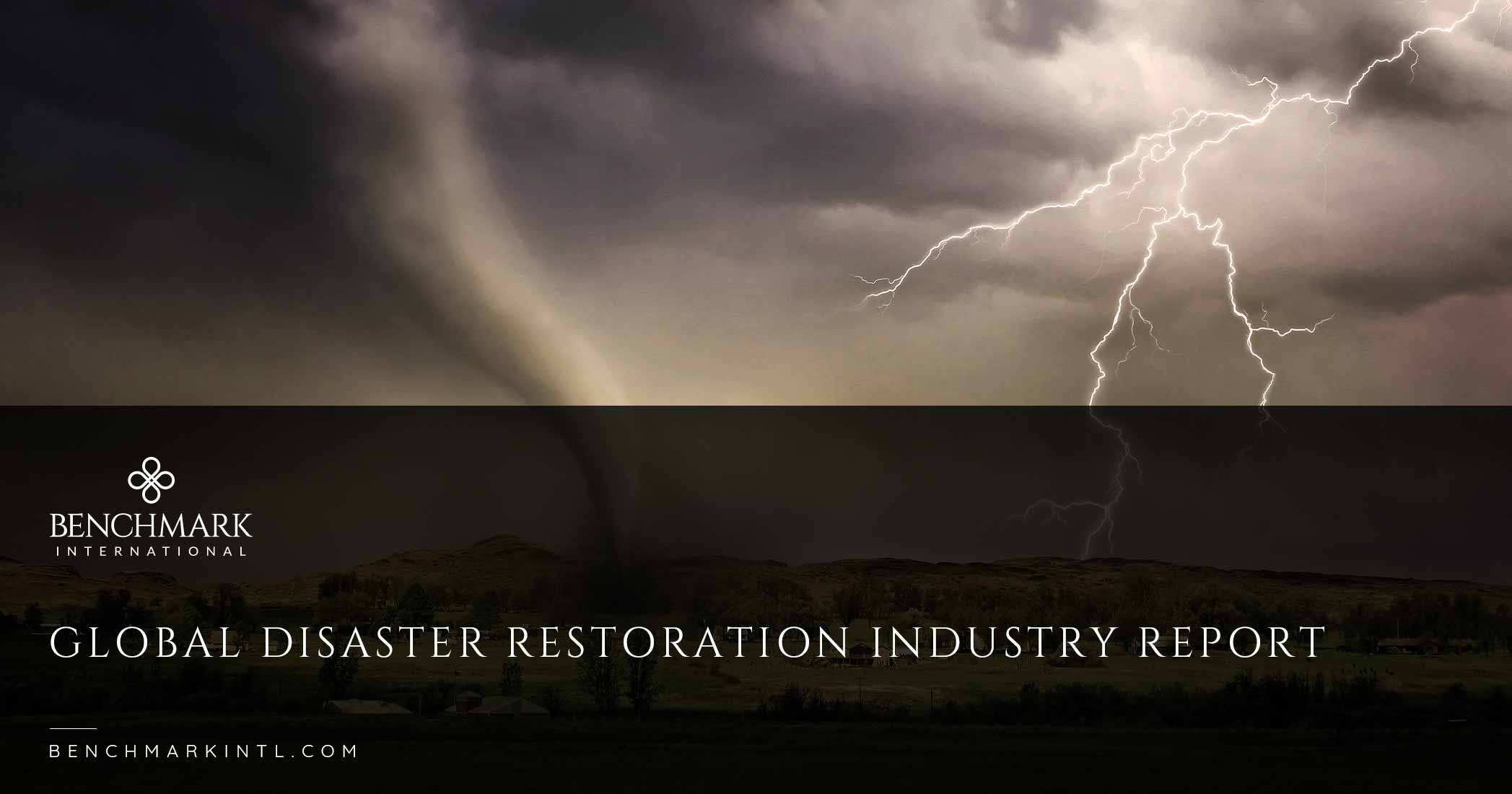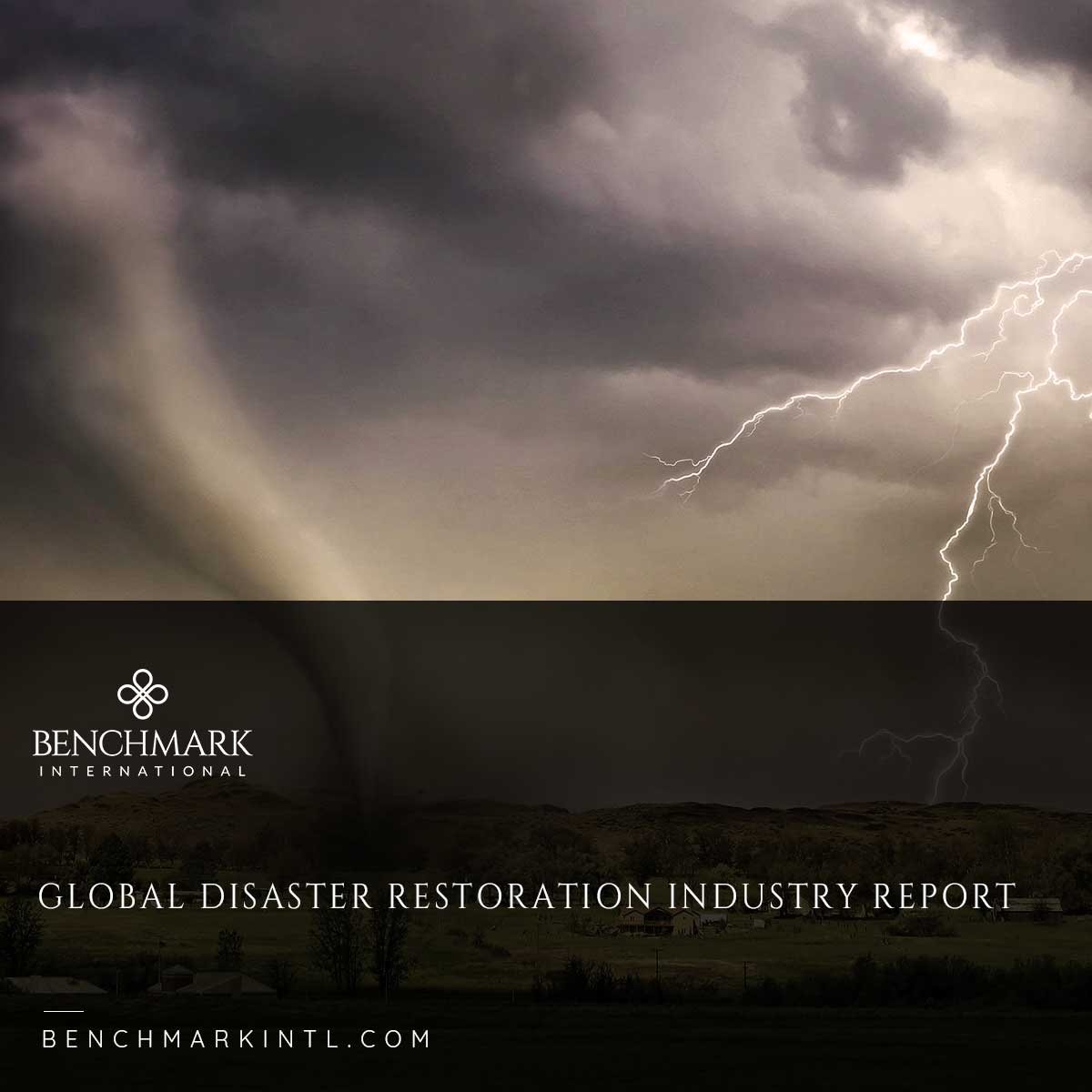
The global disaster restoration industry is currently valued at $41.2 billion. The worldwide demand for disaster restoration services expects to increase significantly through 2033, growing at a compound annual growth rate (CAGR) of 5.7% to reach a market value of $80.1 billion.
The highly dynamic restoration market expects a notable expansion in the foreseeable future due to various factors, including increasing urbanization, a rise in individual spending, and the adoption of innovative technologies. Technological innovation and advancement are optimizing the performance of the disaster restoration space, enabling it to gain a broader range of applications in the market. Governmental regulations in the sector also impact the market.
Other key drivers of the market include
- production costs
- product lines
- availability of essential raw materials
- the strength of key competitors
As natural disasters' frequency and intensity increase worldwide, federal and state governments are now allocating dedicated budgets for disaster restoration services. Floods, wildfires, and storms are occurring more frequently.
According to a study by the Food and Agriculture Organization (FAO), natural disasters occur three times more often than 50 years ago.
In 2022 alone, the Emergency Event Database (EM-DAT) recorded 387 natural hazards and disasters globally. These disasters resulted in the loss of more than 30,700 lives and affected 185 million people. The economic losses totaled around $223.8 billion.
Since 2020, governments have sanctioned an estimated $25 billion for disaster restoration services. The increase in natural disasters can attribute to substantial rises in population and human-induced climate change. This is driving the demand for disaster restoration services. Countries less prone to natural disasters are expected to see lower demand for these services. There is also a lower awareness of disaster restoration services in these areas.
Another critical factor for the industry is the substantial increase in old infrastructure. The residential sector accounts for a 72% share of end-use applications and is expected to continue to dominate the market over the next decade.
M&A
The disaster restoration market is highly fragmented, with several market players supplying vast service offerings. Companies are resorting to service launches, mergers, and acquisitions to grow their footprint and capitalize on larger customer bases. There has been a good bit of consolidation in the industry in recent years, and owners of restoration companies are receiving premium multiples from strategic and private equity buyers. The level of M&A activity significantly changed the competitive landscape across the sector.
In a market where competition is increasing, consumer preferences are being influenced by several factors:
- The qualifications of the disaster recovery company
- The services offered by the company
- 24-hour availability and prompt response
- Insurance policy issues
Other factors impacting restoration companies that could influence market consolidation include:
- Rising interest rates
- Ongoing inflation
- Changes to the insurance market
- Labor shortages
- New software solutions (including insurtech)
- Virtual reality and artificial intelligence (AI)
- Constant industry changes
It is also expected that there will be continuing mergers and acquisitions in restoration and lead sources, including property management, insurance companies, and brokers.
Market Segmentation
The disaster restoration industry is segmented into several different types:
- Fire and Smoke Restoration
- Water Damage Restoration
- Storm Damage Restoration
- Mold Remediation
- Flood Damage Restoration
- Real-time Replication
- Data Backup and Restoration
- Data Protection
The water damage restoration segment is expected to hold the largest market share through 2027, as there has been a substantial increase in water damage to infrastructure and buildings worldwide. Due to deteriorating pipelines and sewage lines, aging infrastructure is prone to water leaks. Water damage also leads to mold in buildings, driving demand for restoration services.
Additionally, there is growing awareness about the adverse health effects of mold. As populations become more educated on the negative impacts of household mold, they are enlisting more mold restoration services, significantly expanding the market.
Companies in the disaster restoration industry are also benefiting from faster claim approval by insurance companies as the incidence of water damage and mold increases. These businesses are also familiar with billing systems to get necessary reimbursements from insurance companies for insured clients.
The residential sector is forecast to lead the disaster restoration end-use application segment. Homes and buildings are negatively impacted by disasters, especially in countries more prone to natural disasters. As the global population increases, home ownership also increases each year. This drives demand for disaster restoration services to repair damage and prevent mold growth.
By Region
The United States is expected to continue to have the most significant demand for disaster restoration services. Due to the different climates around the country, there are various risks regarding natural disasters in several parts of the nation. Wildfires, tornadoes, hurricanes, floods, and other natural disasters impact different regions of the U.S. every year. This substantially increases the demand for disaster restoration services in the country.
Disasters easily damage many aging infrastructures in the U.S., and these disasters occur more frequently. This has increased awareness regarding procuring disaster restoration services to restore aging buildings properly.
China is the most rapidly expanding market, as it is the largest developing economy in the world with a vast population suffering a significant number of disasters, driving an essential need for disaster restoration services in the country. Since the start of the 20th century, China has had more than 800 earthquakes of a magnitude of six or higher. As a rise in earthquakes and other natural disasters persists, demand for disaster restoration services is expected to increase significantly. Additionally, the Chinese government has become committed to constructing buildings with disaster-prevention capacities and is taking favorable initiatives regarding scientific research, development, and mechanisms to address natural disasters.
Americas: Sam Smoot at +1 (813) 898 2350 / Smoot@BenchmarkIntl.com
Europe: Michael Lawrie at +44 (0) 161 359 4400 / Lawrie@BenchmarkIntl.com
Africa: Anthony McCardle at +27 21 300 2055 / McCardle@BenchmarkIntl.com
ABOUT BENCHMARK INTERNATIONAL:
Benchmark International is a global M&A firm that provides business owners with creative, value-maximizing solutions for growing and exiting their businesses. Benchmark International has handled over $10 billion in transaction value across various industries from offices across the world. With decades of M&A experience, Benchmark International’s transaction teams have assisted business owners with achieving their objectives and ensuring the continued growth of their businesses. The firm has also been named the Investment Banking Firm of the Year by The M&A Advisor and the Global M&A Network as well as the #1 Sell-side Exclusive M&A Advisor in the World by Pitchbook’s Global League Tables.
Website: http://www.benchmarkintl.com
Blog: http://blog.benchmarkcorporate.com

 Benchmark International
Benchmark International  Benchmark International
Benchmark International 






